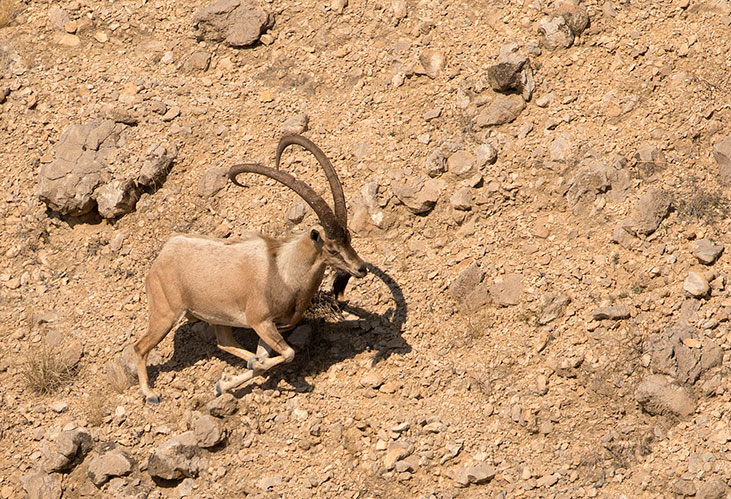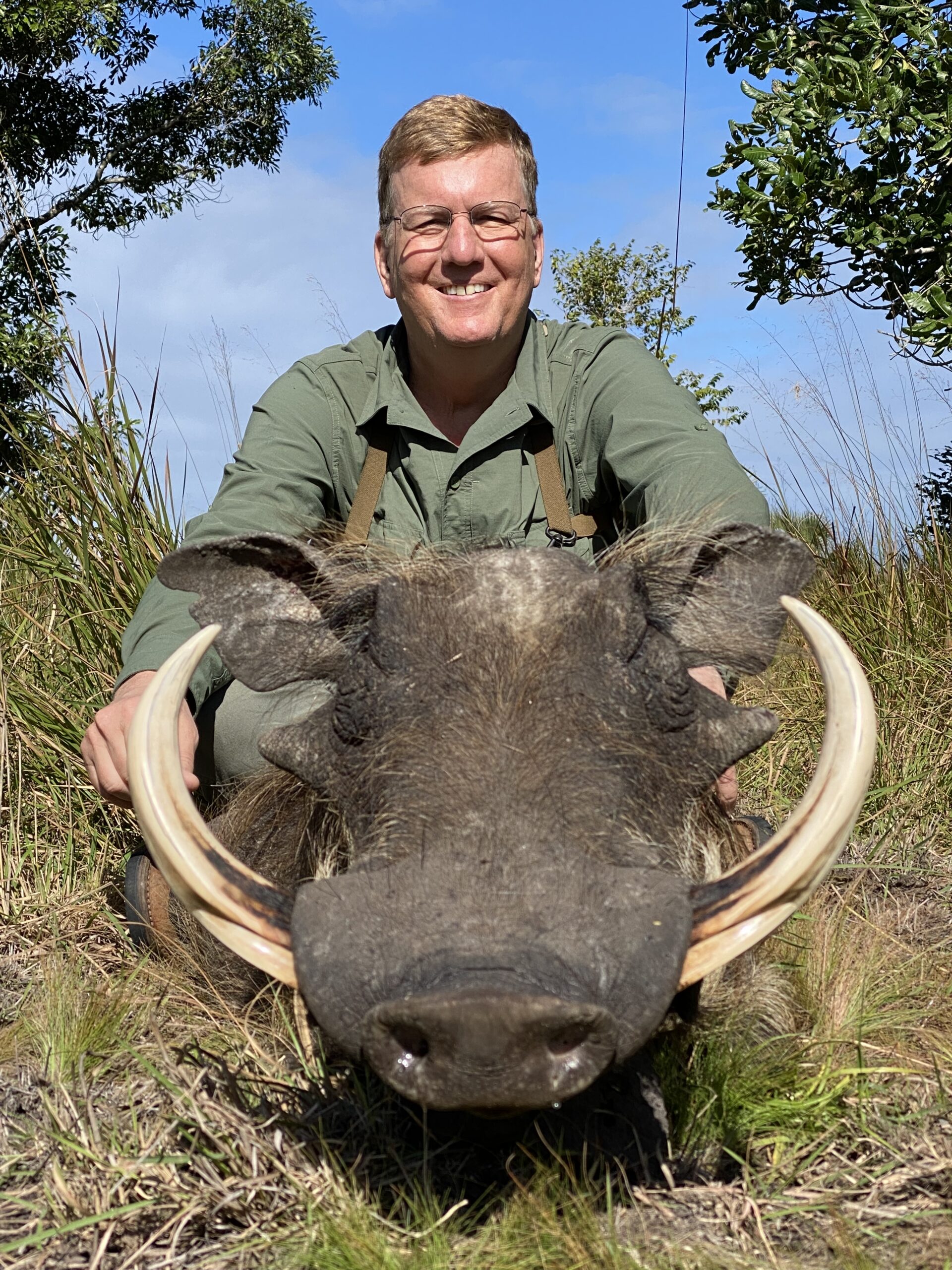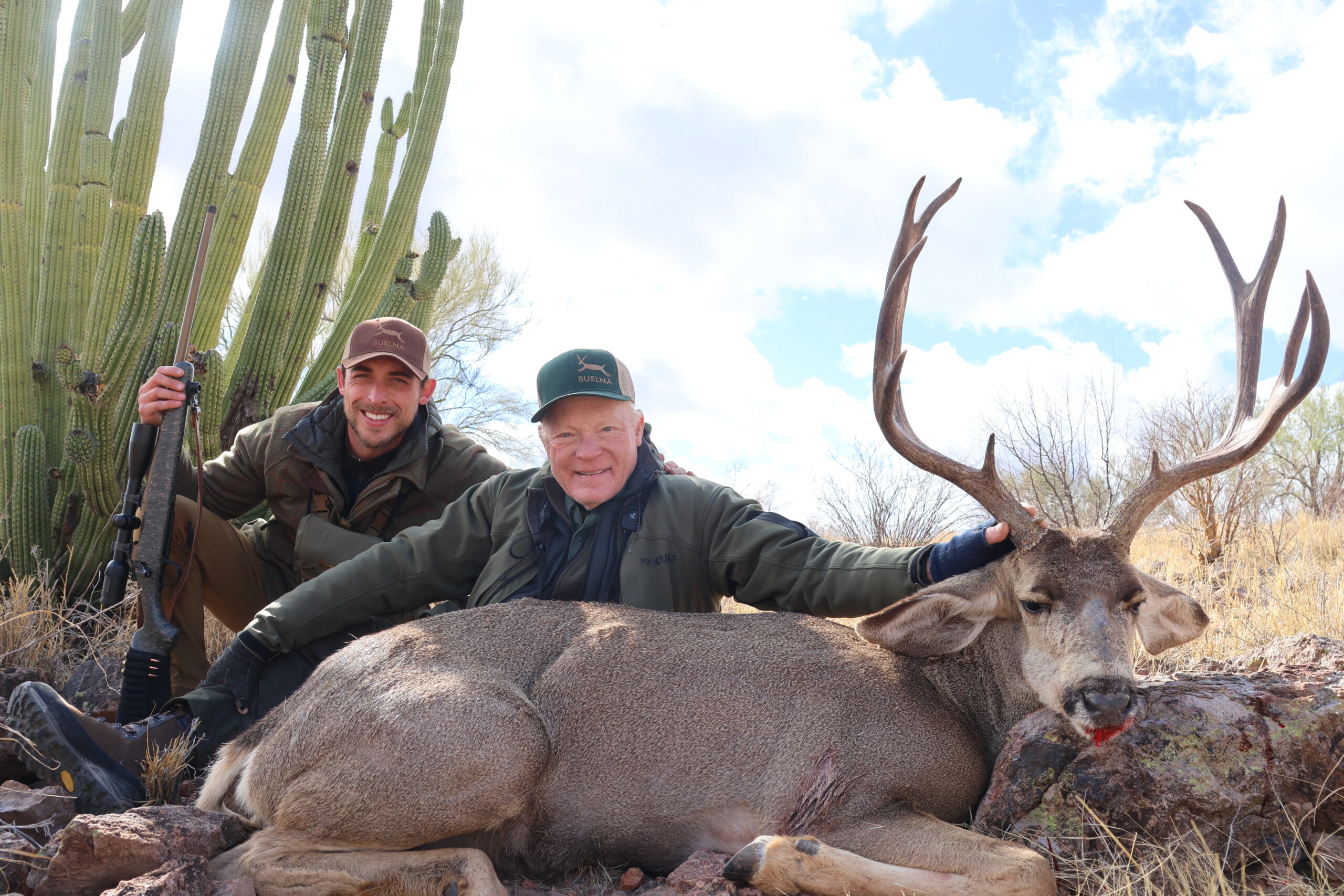by Jens Kjaer Knudsen
The drive from Karachi – Pakistan’s economic capital – to the hunting area has taken four hours. Since we left the military guarded airport, we have pretty much only seen chaos. At a luxurious lodge, we are greeted by two armed guards who open the gates to a heavenly realm that seems out of place in the midst of all this chaos. However, luxury is commensurate with the high price of this hunting trip, because the hunt for sindh ibex is an unusually expensive affair.

We have to wait for the owner of the approximately 22,500-square-kilometer hunting area. He is the boss of the highest caste of the area and is referred to as His Excellency or the Prince. At sunset, he arrives at the camp. We are told that the prince himself is a hunter and will also participate in the hunt as the host of his foreign guests.
Driven hunting
After a good night’s sleep, we test fire the rifles at distances up to 400 meters. Then we drive for an hour on dirt roads through the flatland bush, where the rural people still work bare-handed in the large onion fields. After an hour’s drive, the landscape changes. The reed huts, bush and onion fields are replaced by low, fairly open and very rocky mountains. In the mountains, I meet no fewer than eight local helpers, who have already spotted a small herd of ibex that includes a good buck.
Together with the small crowd of local guides, we walk through small valleys in nice temperatures under a setting sun. Soon we see a large ibex on a plateau, but unfortunately, he has also seen us. He is approximately 800 meters out and disappears quickly into a gorge on the other side of the plateau. It is impossible to stalk the buck, so the chief guide Bilal decides to try to push it forward, where I am posted on one of the mountain ridges, while the local guides push the animals toward us. This is actually against my wishes, as I feel a lot of the hunting intensity diminishes on a mountain hunt when driving the game – but I follow the customs of the country.
A clever buck
Soon there is movement in the animals and several young bucks and females pass my post. For a brief moment, we glimpse the big buck again, but he is still very far away, disappearing into an even narrower gorge. A relatively good buck finally comes in at full speed close to us but, despite the buck looking nice, it is not the old one we saw at the top. When the drive is over, the old one has not shown up. The buck has certainly hidden himself in some vegetation or in one of the caves of the area. This tactic is often used by the older cunning animals, who, in a race with the younger animals, will most often be the slowest and therefore most exposed to pursuing enemies.
We drop down into the gorge below us, where large amounts of water run in the rainy season, but which is now completely dried out. We move under thorny bushes and trees, over sharp cliffs, through pebbles and up and down. I have the magnification of the scope down to three, to offer a quick shot at a very short distance as the old male can jump up at any moment.

After an hour, one of the local guides suddenly spots an ibex under a large bush with dense branches. It is an ibex with very light fur, which means an old buck. Though it is possible for me to shoot in between the branches, I want to see the horns properly before the shot is fired.
A successful plan
We stalk to a position at a distance of approximately 275 meters where we can wait for him to get up and get out into the open. For two hours we lie under the burning sun. Every time the ibex gets up, I throw myself into the shooting position and get ready. The sharp stones and rocks bite like rat teeth in both knees and elbows when I have to move into position fast, but when a chance arises it is important to be ready. The first three times the ibex gets up, he does not intend to leave the cover. The ibex just turns around to lie down on his other side. An hour before sunset, he gets up for the fourth time and this time stays on his feet. I am ready when the ibex leaves its hiding place, but it never gets completely clear before it settles down again, this time behind a completely dense succulent bush a few meters higher up the mountainside.
We stalk even closer and are finally within 80 meters of the bush. Billal decides that he wants to sneak around a small peak in front of us, in order to get really close to the bush that covers the ibex. Suddenly he sees it clearly, but at the same time, the ibex senses that something is wrong and jumps out of the bush. He takes a few quick steps up the mountainside before stopping for a moment. I readied my Blaser R8, but the ibex’s rear end is pointed towards me. I cannot put the bullet into the vital parts of the animal.

The ibex takes a few more steps upwards before stopping again to orient itself. This time it turns so that I can insert the fast 6.5 Creedmoor ELD-X bullet. It hits the back edge of the lungs and goes straight through the vitals. The strong animal takes a short run a few meters up before falling dead at the top. The guide is quick to go forward, make a small cut in the neck on the ibex with his knife. Even though it is both shot and dead it has, according to local tradition, still to be halal slaughtered in order for the locals to eat the meat. Later, parts of the animal, the back strap and the deep-fried testicles end up on the dining table in the luxury camp.
Only a few licenses are issued for sindh ibex, which means that the price is high. The high price of course gives the game and the habitats great value and thus also the opportunity to be preserved. That the prince’s economic opportunities with the hunt are combined with the Pakistani conservation model called KVO provides a safe haven for the ibexes.
The KVO model ensures that locals benefit financially from the trophy hunt, as it ensures that 80 percent of the proceeds from the sale of licenses go to local health and education purposes, while the remaining 20 percent goes to game rangers in the National Wildlife Department, whose job is to keep a watchful eye on the ibex population and animal habitats. Poaching results in a fine equal to the price of a license, which is unaffordable for poor farm workers. In addition, poaching will certainly also expose the poacher to social disrespect, as, according to the KVO model, is equivalent to limiting the possibility of future income to the benefit for local community.
Karachi and chaos

Next day we pack our things and drive to a hotel in Karachi, a hotel surrounded by chaos and security guards. At no time have we felt insecure during the trip – after all the guards are there to take care of us, and it has worked all the way through. We have only met sweet, helpful and friendly people throughout the journey. It has been an exciting, luxurious, educational and nerve-wracking hunting trip to an area of the world that you do not just visit unless you are driven by the desire for an adventure or the encounter with an exclusive game species.
The hunting experience can be found more or less the same elsewhere in the world, also in safer destinations. However, the experience of hunting in a time pocket that is several hundred years old, and in a destination where notions of honor and hierarchy require you to be flanked by armed bodyguards is completely unique. It was a hunt among people who live pretty much as they have done for centuries.
I took a 12-year-old buck after a fantastically exciting hunting day that passed and ended exactly as I had hoped. I tried both the driven hunt and the stalking and had a good long hunting day under the sun of the semi-desert, before I could secure the trophy I had dreamed of taking for many years. The ibex became my capra species number 30.




